What is the best way to get rid of spider mites?
No bigger than the period at the end of this sentence, Spider Mites are a formidable foe. An infestation can cause damage that is not visibly perceptible until the following year and by that time it could be too late. They can take down the smallest herb and damage full grown spruce tree! Luckily there is proven action to be taken to get rid of them but don’t waste your time using methods for other insects (surprise – mites are not insects!). Join thousands of other homeowners in the battle against this specialized pest. So, what is the best way to get rid of spider mites.
There are three time-proven solutions: products containing natural plant extracts, insecticidal soap, and powerful miticides based on chemicals providing an intense knockdown effect. Keep in mind that spider mites cannot be killed with regular insecticides, therefore, you should opt only for products labeled as miticides. This is one of many misconceptions that we hope to clear up today. Keep reading to find out more unexpected tips and tricks to get rid of these mighty mites.
While being highly potent and pretty toxic, miticides can often be applied directly to plant leaves. Insecticidal oils have a milder action but have the advantage of being comparatively nontoxic. Scientists at Michigan State University note that insecticidal soaps are very effective on spider mites but a generally safe for pollinators. They do not leave residue on plants and, therefore, are not toxic to beneficial insects after drying. As for plant-based solutions, we recommend using products with neem oil extract. This is a highly effective natural miticide that can be safely used on ornamentals, vegetables, and fruits. Each of these options are covered below.
Biology and Behavior of Spider Mites:
The first thing you should know is that these tiny creatures are not actually insects, they are rather related to a group of arachnids, and were named spider mites due to their ability to produce fine silk. They are parasites damaging crops, trees, and plants by sucking on the underside of leaves and thus killing the vegetation. For this reason, taking timely measures related to spider mite control is essential for farmers and gardeners facing this kind of infestation.
{code 416}
In this article, we will tell you how to get rid of spider mites by the most effective way, including a botanical control, and will look at the 8 most popular pest control products which are commercially available. To make our research as reliable as possible, we have based our conclusions only on scientifically proven facts and referred to academic studies. Also, we have examined the consumers’ feedback on particular products.
Signs you have a spider mite infestation:
So, how do you know that you are dealing with spider mites? It’s not easy to detect them with the naked eye, without a magnifying glass, as these spiders are incredibly small in size which does not exceed 1/50 inch in length. Visually, they look like moving dots and when monitoring spider mites you will notice a surprising amount of such moving dots as they live in colonies. Fading leaves with speckles on the top and a webbing underneath is an unmistakable sign of mite infestation. In order to make sure that you are dealing with spider mites, tap a leaf over white paper. If you see moving dots, it’s them.
Spider Mite Habitat and Appearance:
Spider mites live a short life which sometimes does not exceed seven days but, as if to make up for this, they produce up to twenty generations annually. They normally overwinter in plant debris on the ground. What are the physical characteristics of spider mites? These arachnids have eight legs and an oval-shaped body, but you may encounter diverse species depending on the region. There is a number of species, the presence of which in the area varies geographically.
Two-spotted and spruce spider mites are the most troublesome species. They have a green-yellow body decorated with two black spots. These pests feed on a broad spectrum of plants, trees, fruits and flowers, weaving webs under leaves or on branches. The female mites overwinter in the soil – this info should be taken into account when making a decision on when and where to apply pest control measures. Two-spotted spider mites can be observed in the period from June to October. And the most unpleasant part of it is that they are notably active during this time laying translucent eggs as long as the weather permits. Note that the most favorable weather for the Two-spotted spider mite is sunny and dry. These pests infest almost two hundred types of plants, whether they are crops, weeds or flowers, causing premature leaf drop.
Another species of spider mite, which hates wet weather conditions, is the European red mites which often occur on apple, cherry, and other fruit trees. They lay eggs of bright red color, either on branches, or on the leaf underside in such amounts that one would easily mistake it for powder. Spruce spider mites attack all sorts of conifers turning their needles brown. Most damage is inflicted at the base of a tree or shrub, with older needles being especially vulnerable. This species prefers a cooler temperature, which is why they are most active in the spring and autumn. To check for Spruce spider mites, look for webbings on the needles. Upon discovering them, do not hesitate to resort to pest control management as, in case of heavy infestation, trees and shrubs of small sizes can be totally destroyed by these pests. Meanwhile, do not let these creatures trick you: the damage may not be seen until mid-summer, even if the tree was infested as far back as the previous year.
Before treating spider mites in your garden, take some measures to create conditions unfavorable for these pests. First and foremost, remove dust with the use of water. Irrigating plants with a focus on the leaf undersides will keep them clean, making them less likely to experience a mite infestation. But remember, you have to do it on a regular basis to obtain the result.
Michael F. Potter, an extension entomologist at the University of Kentucky College of Agriculture, recommends using a garden hose to remove mites from small plants. He notes, however, that this approach will not work in case of heavy infestation. Apart from this, pull out seriously infested plants and use floating row covers to protect your garden. Remember, they live in soil and leaf litter for part of the year.
When facing a severe problem involving spider mites, it makes sense to resort to chemical control. As David J. Shetlar, at the Department of Entomology, the Ohio State University Extension, put it, as a rule, because they are not insects, spider mites cannot be killed with regular insecticides, which is why only products marked with “miticide” label should be applied in this case. If the label says “for mite suppression,” then it means that the product is too weak to control spider mites and you will have to apply it a number of times to achieve the result. Mr. Shetlar stresses that most true miticides are labeled for restricted use only and are available for licensed professionals. However, there are the following miticides intended for over-the-counter sale: Abamectin, Bifenazate, Hexythiazox, and Spiromesifen.
Mind you, miticides are very potent solutions, so be sure to read the product’s instructions before application as it may damage or discolor some species of plants. Also, when spraying a miticide, it is crucial for the product to thoroughly cover the leaves, especially their undersides. Apply the product exactly to the product instructions in order to efficiently control spider mites.
Also, spraying horticultural oil and dormant oil is a good solution for homeowners, although some flowers may be damaged by these so-called “soft pesticides”. Nor should they be applied to conifers which could be discolored. When spraying insecticidal oils, take care to cover the foliage particularly thoroughly. Use horticultural oils in summer, while dormant oils should be applied during colder months of the year. Products based on these substances have a significant advantage: they have minimal negative impact on beneficial insects. But a disadvantage is also witnessed. Namely, the effect of these oils lasts for a short period of time and it is necessary to re-apply the substance, an article published by the University of Maryland Extension states.
Surprisingly, the application of some insecticides can encourage multiplication of spider mites, according to L. D. Godfrey, an entomologist at the University of California. Insecticides kill natural insect enemies of mites. Another drawback of some insecticides is that they prompt reproduction of spider mites. “For example, spider mites exposed to carbaryl (Sevin) in the laboratory have been shown to reproduce faster than untreated populations. Carbaryl, some organophosphates, and some pyrethroids apparently also favor spider mites by increasing the level of nitrogen in leaves,” the scientist claims.
Also, as long as spider mites do not consume anything they will not be harmed by chemicals functioning through ingestion.
Note that pesticides can harm human health and cause damage to the environment, therefore thoroughly read the product’s label and manufacturer’s application instruction regarding the usage, storage, and disposal of that given chemical. Always strictly follow the instructions.
When tackling spider mites infestations, take a broader approach and treat both adults and eggs. The latter are responsible for future generations of the pests and preventing their emergence helps keep your garden safe and healthy. Spider mite eggs normally have a spherical, round shape, but, as we have mentioned above, their color may vary depending on the species and they are freaky small.
These bite-size balls can be discovered on the underside of leaves, meanwhile, it is not an easy task to destroy them. The thing is that miticides have little or no impact on mite eggs, nor do they affect larvae and molting nymphs. Michael F. Potter from the University of Kentucky attributes this peculiarity to the fact that when molting the former skin of these arachnids make them resistant to chemicals.
Scientists at the University of Maryland Extension claim that horticultural oil and insecticidal soap have the strongest impact on spider mite eggs. Spraying is recommended early in the morning, however, take care not to treat the plants too heavily as they can be harmed. Spruce spider mites and European red mites overwinter as eggs on the plants, that is why dormant oils designed to be used in the cold months of the year are helpful in eliminating the infestation.
Spider Mite Predators:
Sometimes nature itself does all the work for you – take advantage of it take advantage of it while you can. This is particularly relevant when it comes to organic gardening. Biological control implies the exploitation of insects preying on spider mites, such as ladybugs, as well as predatory mites which kill spider pests. Actually, there is a wide range of natural enemies of spider mites that can be used in your pest control strategy. These are six-spotted thrips, the larvae of particular flies such as the cecidomyid Feltiella acarivora, and some general predators including minute pirate bugs and lacewing larvae, to name a few. Western flower thrips are effective in dealing with both spider mite eggs and larvae. Be careful, however, in using this kind of predators as they can also harm the vegetation.
Ladybugs are commercially available but it could be impractical to buy them as they will fly away as soon as their food ends. For this reason, it makes sense to attract these insects naturally, in particular, by building or buying special ladybug houses.
L. D. Godfrey from the University of California advises using western predatory mite and Phytoseiulus mite species, which go after plant-feeding spider mites (of which this article focuses on getting rid of). This one is best for hot and dry environments. These predator mites can be purchased from a shop and should be released on the infested plants or trees.
When establishing a new population, predatory mites should be purchased. But in order to achieve maximum efficiency, take care to create favorable conditions for predators to live and reproduce by avoiding the use of chemicals in pest treatment. In case of biological spider mite control, scientists recommend tackling heavy infestations by first applying soap spray to reduce the number of these plant-feeders and then putting predatory mites to do their job. The StopPestInfo Research Team notes that repeated releases of predators may be needed for satisfactory control and achieving a long term result.
Natural and Homemade Methods to get rid of Spider Mites:
It is not only predators that can be used. Below you will find tips on how to treat spider mites naturally and some homemade recipes:
Pepper spray. You need water and a piece of soap without additives. Mix them in the proportion nine to one, then add one tablespoon of cayenne pepper. When the liquid is ready to use, spray the bottom of every leaf in the infested area.
Nicotine spray. Note that commercial options are too strong and can be harmful to beneficial insects, whereas their homemade versions have a milder impact. To make a nicotine spray, mix a cup of cigarette butts with one gallon of warm water, and add ten drops of liquid soap. The latter will help the liquid to coat the plant. Steep the mixture for a half an hour, then pour it through a cheesecloth into a container with a lid. Spray it on the under side of the leaves. Keep in a spray bottle for up to a month.
Use essential oils, such as rosemary, neem and lemon. Mix them with one quart / one liter of water and pour the liquid into a spray bottle. It will kill spider mites without damaging the infested plants. Saber Miresmailli, the Executive Science Officer of Sumatics LLC. at New York, claims that rosemary oil is good at killing spider mites, while it does not have a strong impact on predators which are beneficial. According to laboratory bioassay results, “a pure rosemary oil and rosemary oil-based pesticides caused complete mortality of spider mites at concentrations that are not phytotoxic to the host plant”.
Apply diatomaceous earth, which is a natural mineral and multi-purpose organic pesticide. DE kills spider mites through dehydration by removing the outer layer of their cuticles.
How To Get Rid Of Spider Mites: Comparison Chart with Effectiveness Ratings 1-10
| Method | Advantage | Disadvantage |
| Removing dust. Grade (1-10): 10 | environmentally friendly solution; creates unfavorable conditions for spider mites; does not involve spending money | time-consuming; should be done regularly to produce a result |
| Killing mites with a strong stream of water. Grade (1-10): 9 | produce an immediate result; kills lots of mites at once; environmentally friendly solution | time-consuming; does not work in case of heavy infestation; may harm leaves of the plants; |
| Miticides Grade (1-10): 8 | produce an immediate result; kills lots of mites at once; | most true miticides are available for professionals only; may damage or discolor some species of plants; encourages the spread of mites by killing the beneficial insects preying on them; mites can become resistant to various pesticides; no impact on mite eggs; |
| Horticultural / dormant oils. Grade (1-10): 10 | have minimal impact on beneficial insects; unlike miticides, available for homeowners; effectively destroy eggs and larvae; can be used on a year-round basis | the effect lasts for a short period of time; requires repeated applications |
| Use of natural predators. Grade (1-10): 10 | environmentally friendly solution; can be attracted naturally by means of creating favorable conditions | can leave the area when running out of food; some species of predatory mites can damage plants; repeated releases of predators may be needed |
| Diatomaceous earth. Grade (1-10): 9 | environmentally friendly solution; does not contain poisons | can cause skin human irritation; does not work when wet |
| Pepper spray. Grade (1-10): 8 | can be homemade; easy solution; natural | has a short-term effect; can burn and irritate human skin; required repeated application |
| Nicotine spray. Grade (1-10): 6 | can be homemade; natural | has a short-term effect; required repeated application |
| Essential oils. Grade (1-10): 8 | kill spider mites without damaging the infested plants; can be homemade; natural; does not have a strong impact on beneficial predators | have a short-term effect; required repeated application |
TOP-8 Spider Mite Killers
Below you will find a review of commercially available products designed to kill spider mites and their eggs. We will consider natural predators, such as ladybugs and predatory mites, insecticides based on chemicals and natural ingredients, as well as insecticidal soap and dormant oil recommended by scientists for eggs destruction.
1. Garden Safe Brand Insecticidal Soap Insect Killer
This solution is made from plant-derived fatty acids and is compatible with organic gardening. It kills mites on contact by penetrating the body and disrupting cellular function. The product can be applied on vegetables, fruit trees, ornamental plants, including edibles. However, to obtain desirable results, you should spray on spider mites directly, namely, all over the leaves and stems as well as under the leaves, otherwise, the effect is not guaranteed.
Garden Safe is useless in the elimination of spider mite eggs. It must not be applied on sweet peas and delicate ferns, as well as should be used with care on blooms and transplants. Also, do not treat plants with the spray during the full sun or on hot days. In case of rain, it should be reapplied.
The StopPestInfo Editorial Staff would like to remind users to be thorough, spraying even under the leaves. We also recommend this spray as a seasonal preventative.
Price: Check the current price
2. Safer Brand 5118-6 Insect Killing Soap Concentrate
Safer Brand costs twice as much as the previous product, but it still seems to be a cost-effective. This concentrate, half of which are salts of fatty acids, makes up to six gallons of ready-to-use liquid. You must mix one-part soap concentrate with 50 parts water. It is certified for use in organic gardening by OMRI and the NOP and can be used on edibles and ornamentals as well. The product’s key distinguishing feature is that the bottle contains fifty times more of the acids than the spray we reviewed before. But still, you will have to make a number of applications for a satisfactory spider mite control.
To avoid common negative experiences with this product, the SPI Team would like to remind potential users to 1) properly identify that mites are actually your pest and 2) dilute and spray thoroughly and repeatedly. Remembering these tips will save you from the trouble of other, less informed, users.
Price: Check the current price
3. BioAdvanced 701290B Insecticide Fungicide Miticide 3-in-1
This product containing Imidacloprid is more expensive than the soap concentrates. BioAdvanced is labeled for application on plants, trees, and shrubs attacking a number of pests, including spider mites. The solution has one-month protection against rain, moreover, its residual lasts two times longer compared with other products. The SPI Research Team observes that the effective time of this product allows it to span over the life cycle from egg to adult in some mite species. This is important because most products work only on adult spider mites.
This product is touted as the one that finally worked after trying many other sprays. To avoid any negative experiences, try our recommendation of applying it daily to the leaves of the most heavily affected plants. Don’t forget to include spraying the soils as well, according to the instructions.
Price: Check the current price
4. Supreme Growers Smite Spider Mite Killer
This insecticide will cost you more money, but this is the price to pay for a solution based on natural ingredients. It is designed specifically to control spider mites and, according to the manufacturer, the product kills them at all stages, including eggs. Apply the product both indoors and outdoors, it is safe for pets, people and the environment.
Supreme Growers Smite Spider Mite Killer includes active ingredients sodium lauryl sulfate which creates a foam, as well as geranium, castor and rosemary oils. Regarding the latter, as we stated above, rosemary oil causes a total elimination of the affected mites, with plants remaining unharmed if the product is used at reasonable concentrations.
The manufacturer claims that this product is as effective as chemical pesticides which are not as environmentally friendly. There are some mixed feelings expressed on the internet based on user experience. The SPI Research Team suggests that this is still an excellent product to try first if you value environmentally responsible ingredients. There is sound science behind this product are we are proud to recommend it for use indoors and in tandem with other initial treatments like spraying or wiping the mites off.
Price: Check the current price
5. 1500 Live Ladybugs
Ladybugs are natural enemies of spider mites and a very efficient solution to the pest infestation problem. This package contains 1500 ladybugs which are guaranteed to be delivered alive. Also, you will get a guide on how and when to release these insects, as well as some tips related to the treatment.
Taking into account the recommendations of the scientists mentioned above, this looks like an attractive offer as not only adults ladybugs, but their larvae as well prey on spider mites. When buying 1500 these beneficial insects you actually get much more of them since ladybugs will reproduce increasing their population.
It is preferable to release them at dusk close to the infested plants and trees. Prior to releasing the ladybugs, irrigate the plants to provide these insects with a source of water. Do not let them out at once, rather introduce in small portions regularly. However, if you have just applied any pesticide in the garden, wait for several weeks before releasing the ladybugs. Time your purchase accordingly. As a reference, this number of ladybugs covers about 1000 square feet of the area.
We are pleasantly surprised with how many individuals have experienced receiving healthy lady bugs in the mail. What an amazing time we live in to have so many natural options for dealing with pests. Pay attention to our suggestions above to give these little beauties the best chance to do what they do best.
Price: Check the current price
6. 2,000 Live Adult Predatory Mites
If you do not trust these tiny ladies, but still want to use natural predators, consider predatory mites. This offer is twice as expensive as the previous one (also, user comments from around the internet can be a little negative…). The package contains 2,000 predatory mites of different species, so you do not have to guess which one you need in a particular case.
Despite divided opinions about these little warriors, the method is proven and often recommended by scientists. The SPI Team would like to point out that the predatory mites will probably not set up a colony on your house plants as there is no guarantee they will reproduce.
Price: Check the current price
7. Voluntary Purchasing Group 32034 EMW7309834
Dormant Spray contains 97% paraffinic oil as an active ingredient. Present-day dormant oils can be applied to plant leaves on a year-round basis without damaging the foliage, however, in earlier years, dormant oils used to be less refined and unsafe for some plants. This solution should be applied only in the dormant season (winter).
Since the product is a concentrate, mix it with water at a rate of approximately 2 oz per gallon. Actually, the dilution rate depends on the plant you treat. For ornamental ones mix 1.5 oz. per gallon of water, for fruit trees — 3 oz. per gallon. The liquid should be sprayed three times while the plant is dormant.
Many gardeners enjoy the chance to get ahead of pests instead of waiting to battle them all summer. The benefit is being able to get out and enjoy your time being productive in the garden in winter.
Price: Check the current price
8. Mite Massacre 8 oz. Spider Mite Killer and Powdery Mildew Fighter
This solution is designed to kill both adults and their eggs by first suffocating spider mites and then drying their bodies and eggs which lead to the total elimination of several generations. Mite Massacre is a concentrate making up to 8 gallons of spray. To that end, dilute one oz. per gallon of water.
The product is based on a blend of saponified oils killing pests. While being a combination of pesticidal and fungicidal properties, it is based on natural ingredients and can be applied to edibles, however, it is not certified organic. According to the manufacturer, spider mites do not get immune to this product.
Mite Massacre is moderately well liked. The SPI Team thinks it is a good method for plants that regularly suffer from powdery mildew as a combination treatment. To avoid the negative experience of damaging your plants, we suggest trying it out on one plant per species at a time to assess the risk. There is no reason to spray every single plant you own all at once!
Price: Check the current price
Summary of how to get Rid of Spider Mites:
It might be a long journey ahead but the good news is there are many products and methods out there to choose from. Hopefully the efforts and observations of the SPI Team to distill only the very best information will help you win the battle. The best advice is to get started with the one you feel the most comfortable applying regularly and stick to the plan being willing to pivot to a different technique to save your plant babies!

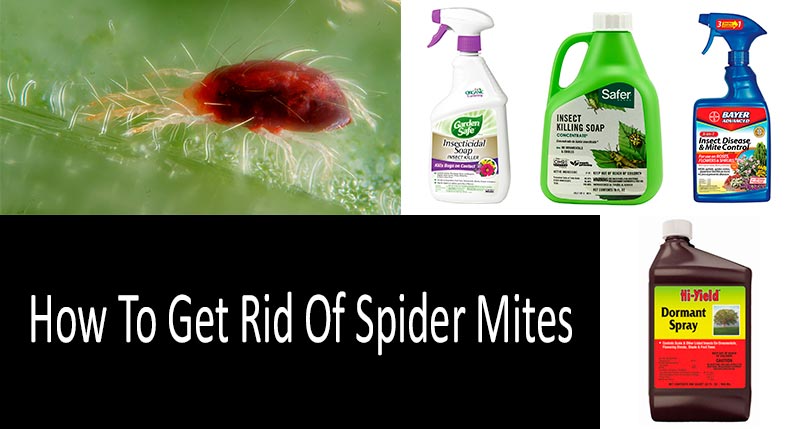
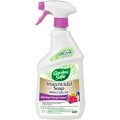
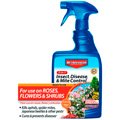
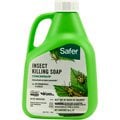
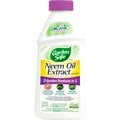








 Type: fatty acids
Type: fatty acids  Type: Potassium salts and fatty acids
Type: Potassium salts and fatty acids  Type: imidacloprid
Type: imidacloprid  Type: Sodium lauryl sulphate and trace amounts of geranium, castor and rosemary oils
Type: Sodium lauryl sulphate and trace amounts of geranium, castor and rosemary oils  Type: natural predators
Type: natural predators  Type: natural predators
Type: natural predators  Type: Parafin oil
Type: Parafin oil  Type: Soya bean oil and Sodium lauryl suphate
Type: Soya bean oil and Sodium lauryl suphate 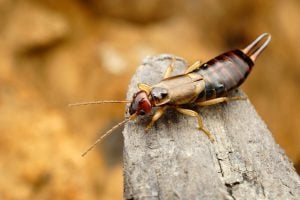

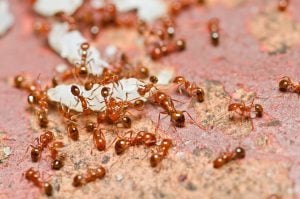

2 thoughts on “How To Get Rid Of Spider Mites”
will melathon get rid of spider mites?
Imidacloprid is specifically NOT recommended for spider mites. 1. It doesn’t kill them, 2. It removes any existing natural predators and 3. It’s use is known to actually result in outbreaks of spider mites where they previously did not exist. We had problems with mealy bugs and hard scale and ended up treated the whole garden with Imidacloprid (after trying everything else that’s recommended, such as soap and neem oil). Four months later, we are inundated with spider mites on everything. Including me, which is how I tracked them down; I was being bitten, resulting in severe, persistent itchy bumps. After excluding everything else I looked at some plants I was constantly brushing past and lo and behold, infestations of spider mites.